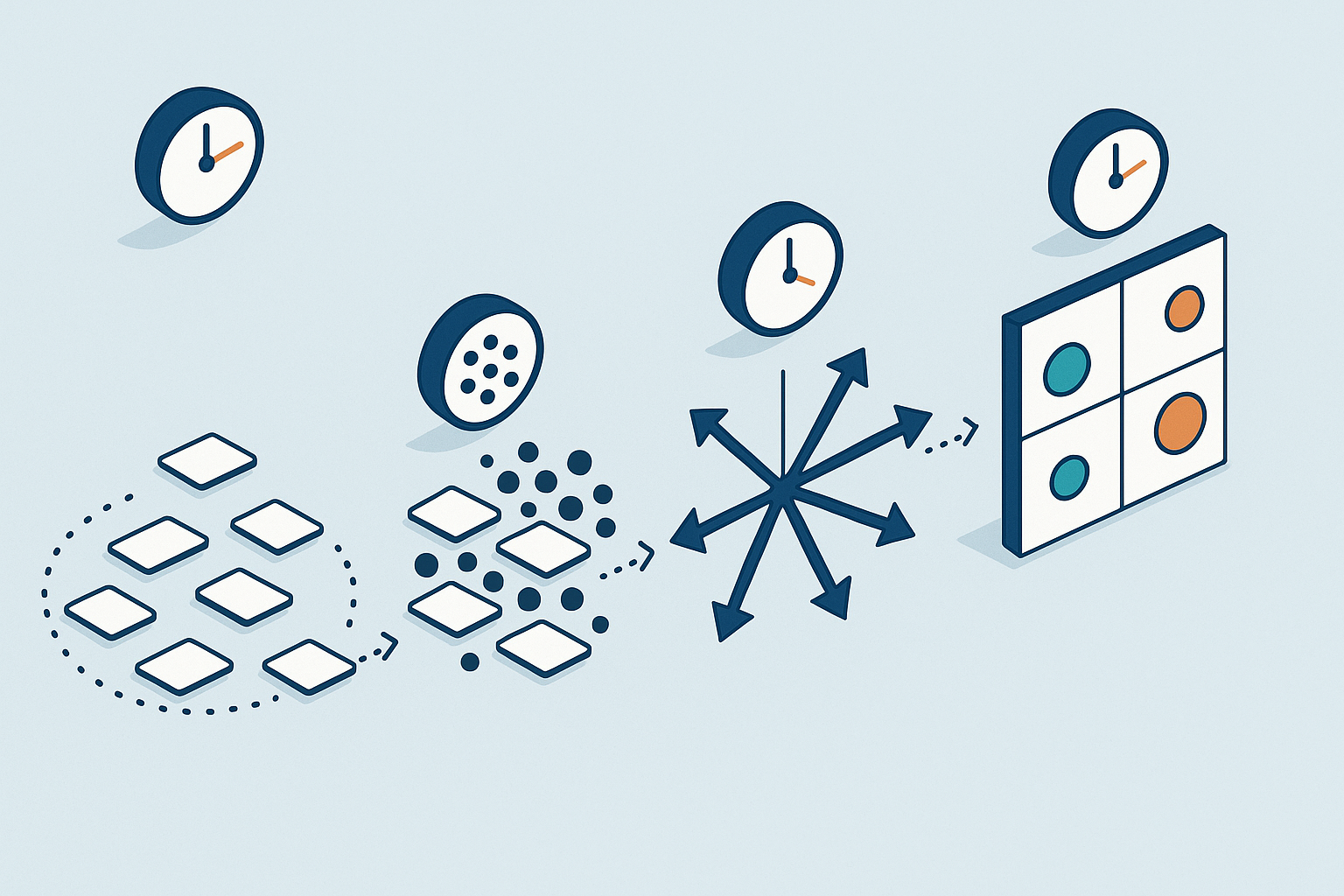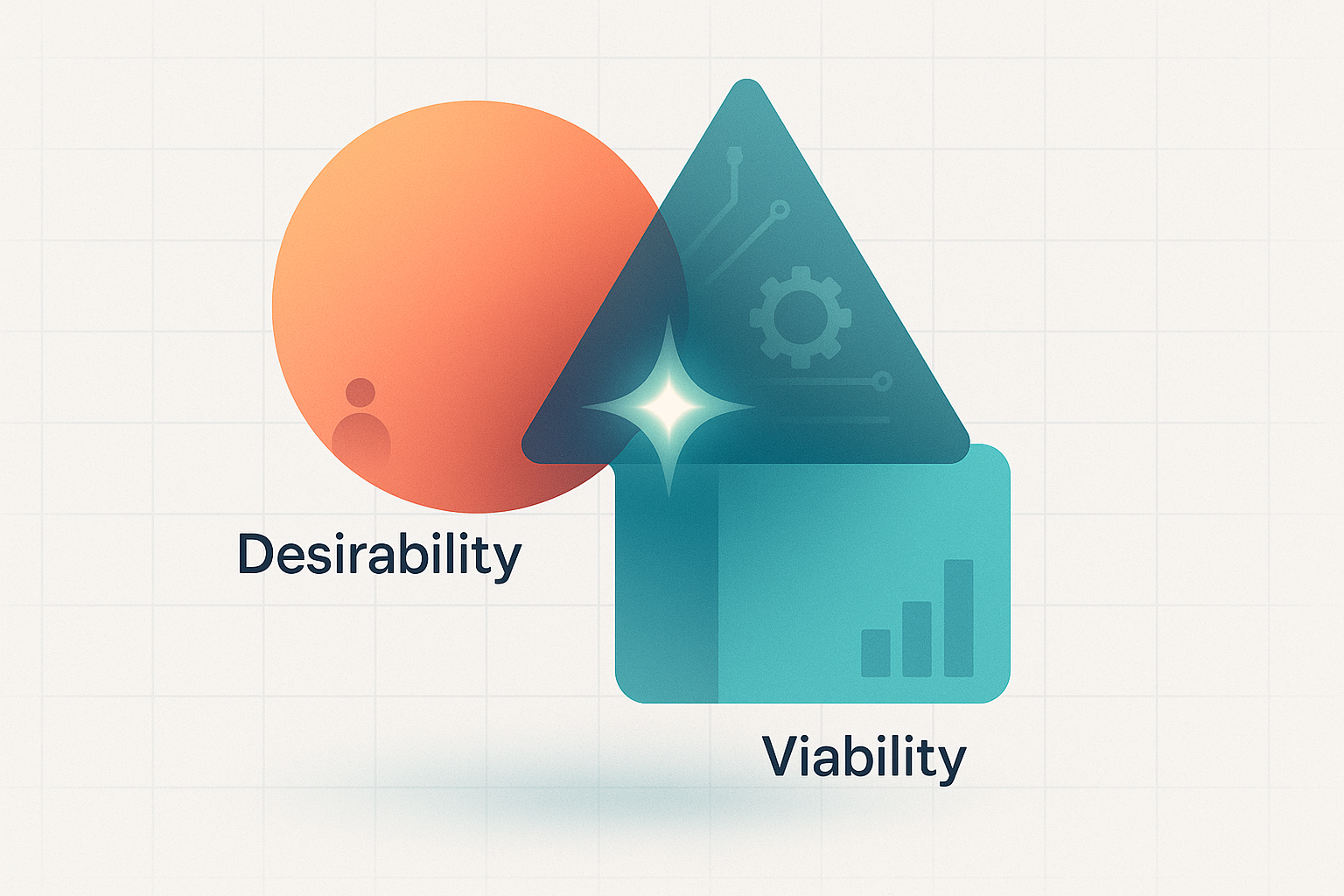Welcome to Innovative Solution Design! As a Product Manager, your ability to move from insight to action determines whether your products thrive or merely survive. Throughout this course, you'll master the frameworks that transform raw user insights into bold, validated solutions that drive real business impact.
You're about to develop three critical capabilities that separate exceptional Product Managers from the rest. First, you'll learn to generate divergent ideas that break through conventional thinking patterns and unlock your team's creative potential. Second, you'll discover systematic approaches to uncover the true root causes behind surface-level problems, ensuring you're solving the right challenges. Finally, you'll master rapid validation techniques that let you test assumptions quickly and pivot based on evidence, not opinion.
By the end of this course, you'll have the tools to facilitate dynamic ideation sessions, prioritize ruthlessly using data-driven frameworks, and build a culture of experimentation that accelerates learning. These skills will empower you to navigate the messy middle between user needs and business constraints, delivering solutions that delight customers while achieving strategic objectives.
Lightning Decision Jams are your secret weapon for breaking through analysis paralysis and generating actionable solutions fast. Unlike traditional brainstorming sessions that often devolve into endless debates, Lightning Decision Jams follow a structured process that produces concrete outcomes in just 30 to 90 minutes. You'll find these techniques invaluable when facing urgent problems that require both rapid team alignment and creative solutions.

The power of Lightning Decision Jams lies in their democratic, time-boxed structure. The process begins with everyone silently writing problems on sticky notes for exactly seven minutes, which prevents the loudest voice from dominating the conversation. Following this, the team votes on which problems to tackle, ensuring you're solving what matters most to everyone involved. The next phase focuses on rapid solution generation, where quantity deliberately beats quality. Participants sketch or write solutions individually for another seven minutes, and this parallel processing generates far more ideas than traditional group discussion ever could. For example, when facing a critical onboarding drop-off, your team might generate solutions ranging from "progressive disclosure of features" to "gamified first-time experience" to "contextual help bubbles".
The final phases bring structure to creativity through dot voting and an effort-impact matrix. Team members place dots on their favorite solutions, naturally surfacing the most promising ideas without lengthy debate. You then plot these top-voted solutions on a 2x2 grid measuring implementation effort against potential impact. This visual immediately reveals your quick wins – those high-impact, low-effort solutions that can be tested immediately. The entire process transforms what could be hours of circular discussion into focused action, and you'll end each jam with clear next steps, assigned owners, and testable hypotheses, turning creative chaos into structured progress.
"How Might We" questions serve as the bridge between problem identification and solution generation. These three simple words transform complaints and obstacles into opportunities for innovation. When crafted skillfully, HMW questions open up the solution space while maintaining laser focus on the core challenge you're solving.
The art of writing effective HMW questions requires finding the sweet spot between too narrow and too broad. A question like "How might we add a search bar to the dashboard?" is too prescriptive because it assumes the solution before exploration even begins. Conversely, "How might we make users happy?" is so broad that it provides no actionable direction whatsoever. The optimal HMW question, such as "How might we help users find relevant information within 10 seconds?", defines the desired outcome without prescribing the method. This framing invites solutions beyond just search bars – perhaps through smart categorization, predictive suggestions, or visual hierarchy improvements – each offering different paths to the same goal.
As a Product Manager, you'll typically generate multiple HMW questions that attack the problem from different angles. Consider a scenario where user activation is declining. You might frame three distinct perspectives to explore the challenge comprehensively. First, "How might we reduce cognitive load during initial setup?" addresses the user psychology angle. Second, "How might we leverage existing user data to minimize manual input?" tackles the technical architecture opportunity. Third, "How might we reimagine onboarding as a value delivery experience rather than a setup process?" challenges fundamental assumptions about the user journey itself. Each question opens different solution pathways, ensuring your team explores the full spectrum of possibilities rather than fixating on the first idea that emerges.
Design Thinking lenses help you examine problems and solutions from multiple perspectives, preventing the tunnel vision that often derails product development. The three critical lenses – desirability, feasibility, and viability – must balance perfectly for any solution to succeed. As a Product Manager, you'll constantly shift between these viewpoints to evaluate ideas comprehensively and make informed decisions.

Let's observe how these lenses work in practice through a conversation between a Product Manager and an Engineering Lead evaluating a proposed smart defaults feature:
- Victoria: Jake, I've been thinking about your smart defaults proposal. It would auto-populate user preferences based on their browsing history. What's the technical lift?
- Jake: Actually quite elegant – we can leverage our existing data pipeline. Maybe two sprints of work, minimal new infrastructure. It's highly feasible.
- Victoria: That's the feasibility lens covered. But let's think about desirability. Our user research showed that 73% of users abandoned onboarding because they felt we were asking for too many permissions upfront.
- Jake: But this would eliminate those permission requests entirely!
- Victoria: True, but wouldn't we still be using their data without explicit consent? Users might feel we're being invasive, even if it's meant to help them.
- Jake: I hadn't considered that angle. So even though it's technically feasible, it might not be desirable from a trust perspective?
- Victoria: Exactly. And from a viability standpoint, if users lose trust, our retention metrics would tank, threatening our $2M funding round. We need a solution that balances all three lenses.
Notice how Victoria systematically evaluates the feature through each lens, revealing that a technically elegant solution might fail on other dimensions. This multi-perspective analysis prevents costly mistakes before development begins.
The desirability lens focuses on what users actually want and need, not what you think they should want. This perspective examines emotional resonance, usability, and genuine value creation. When evaluating a proposed feature like automated task prioritization, the desirability lens prompts essential questions: Do users trust algorithmic recommendations? Does this solve a real pain point or create new anxieties? You might discover that while the feature seems helpful on paper, users actually value the sense of control that manual prioritization provides. The lens then examines technical and operational realities. Can your current infrastructure support this feature? Do you have the engineering expertise required? What technical debt might this create? A solution might be highly desirable but require architectural changes that would delay launch by months, making it practically unfeasible.
